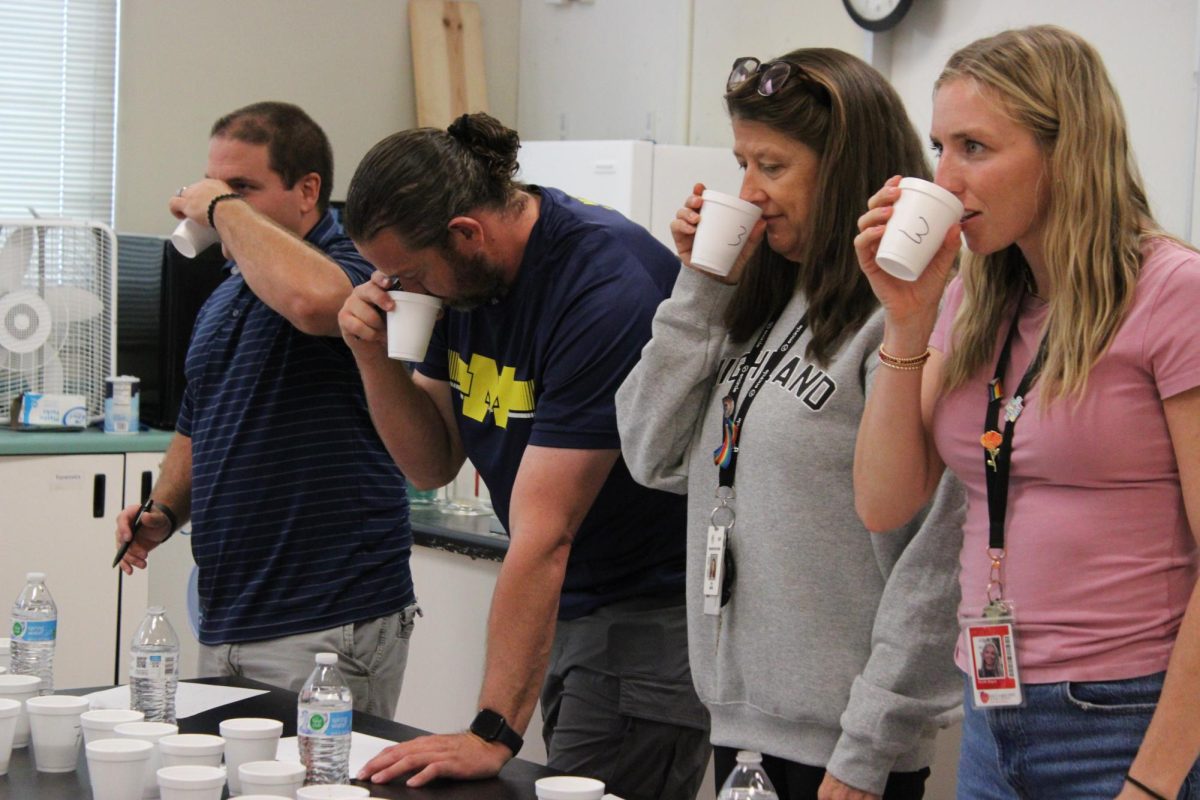There Is Ugliness Around Us
Schools Should Be Filled With More Beauty
January 1, 2021
Think of the most inspiring pieces of art you’ve ever had the chance to enjoy. Which come to mind? Caspar Friedrich’s ‘Wanderer above the Sea of Fog’? ‘The Starry Night’ by Vincent Van Gogh? Or perhaps Michelangelo’s 17-foot-tall, staggeringly beautiful, sculpture of ‘David’?
Or are you more inspired by Marcel Duchamp’s ‘Fountain,’ an ordinary porcelain urinal with a fake signature scribbled on the side? Maybe Andres Serrano’s ‘Piss Christ,’ a work which as the name suggests is a photograph taken of a crucifix submerged in Serrano’s urine? And who can forget Merda d’artista’s canned feces, appropriately titled ‘Artist’s S***’?
It is plain to see that art has died, and with it, the beauty and value of our environment at school.
Our historical attempts to capture beauty on a canvas or in quartz have been seemingly abandoned, and the decay in art has followed us in architecture. Ruined or abandoned structures seem wholly uninviting, often eerie and cold images of Chernobyl’s square cookie-cutter apartments and abandoned housing in urban centers come to mind. Yet the thoughts of structures like the Greek pantheon, or buildings in Europe, whose faces are drawn on by vines and moss, evoke a positive reaction. Despite their state of dilapidation, we see their beauty.
The architecture of today seeks not to inspire or uplift us, but rather to accomplish some task, providing little more than a practical use. Brutalist architecture and the modern cult of function over form have doomed our experiences of the industrial world around us and rather force us to rely on the beauty of friendships and interactions with others.
Schools’ may be the places where beauty is needed most, and yet seemingly the most deprived of it. Walking up to the school we stand under an oppressive orange building, which offers little more than size to draw the eye. The sides which would normally show floral stone details, rounded arches, and moldings have instead been filled by the same window, lined in white, and repeated for every single classroom on a floor.
As we walk in the front doors even the columns, which add some variety to the otherwise bleakly tiled space, offer little more than a felt padding to the entrances overall design. But what of the resting places? Given a variety of options and designs for benches which could include beautiful arm rests, romantic and fluid feet, we decided on benches made of a cold flat slab of rock, and two smaller slabs on which to rest it.
Yet the classroom, the environment wherein the students spends the majority of their time, is perhaps the most depressing. The inspiration for the classrooms at Highland could only be a state penitentiary; the desks, which offer little more than an uncomfortable sleep when a student becomes unsurprisingly tired of their environment, could not possess less creativity. Yet our teachers always wonder why we are so uninterested not only in our classes, but school in general. The most memorable days a student has, are the ones where they get to leave the school. In AP Psychology, the importance of a positive learning environment wherein we felt comfortable was explained to us, but how can we expect to be comfortable in an environment that cares not for its appearance but only its utility?
Are we forever confined to an environment of ugliness? Of course not! Parts of the school have already been improved or transformed through the creativity and ingenuity of students. The art hall for instance, despite being one of the shortest in the school sticks out in our minds as one of the most beautiful. It’s tiled walls are each covered in beautiful students paintings so unique and creative one could spend an entire lunch period fixated on each tile. Or Ms. Conkling’s classroom, which boasts an impressive wall-wide mural of the Buddha giving life to what would be an otherwise bleak classroom.
The antidote to ugliness can only come by encouraging and allowing students to transform their environment to better reflect their creativity and spirit. I hope that going forward the spirit bowl should not be some exception, allowing students only once a year to make their environment attractive, rather that it is the standard.





























